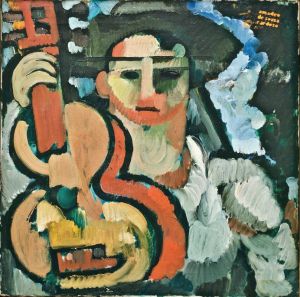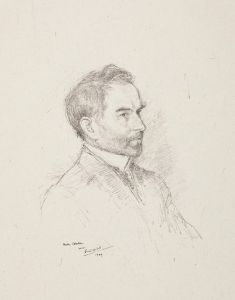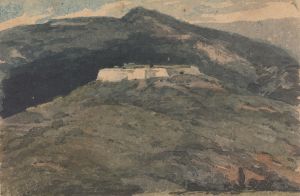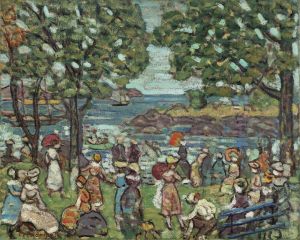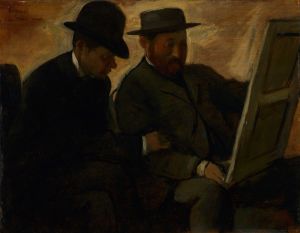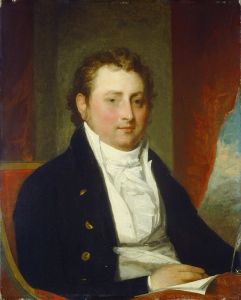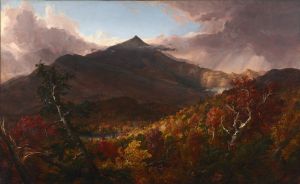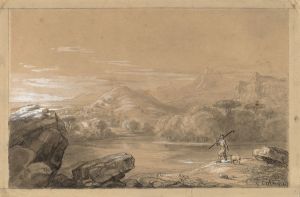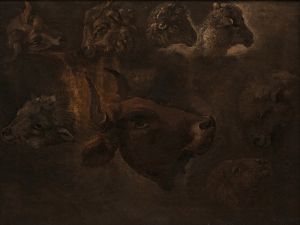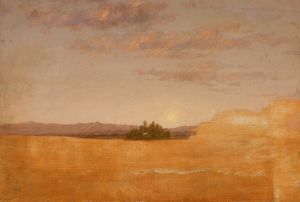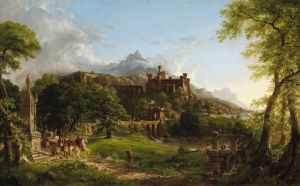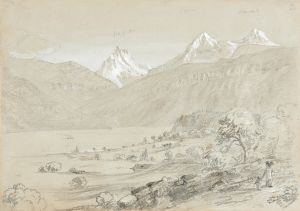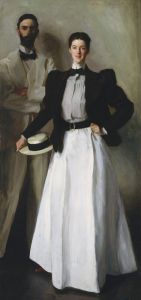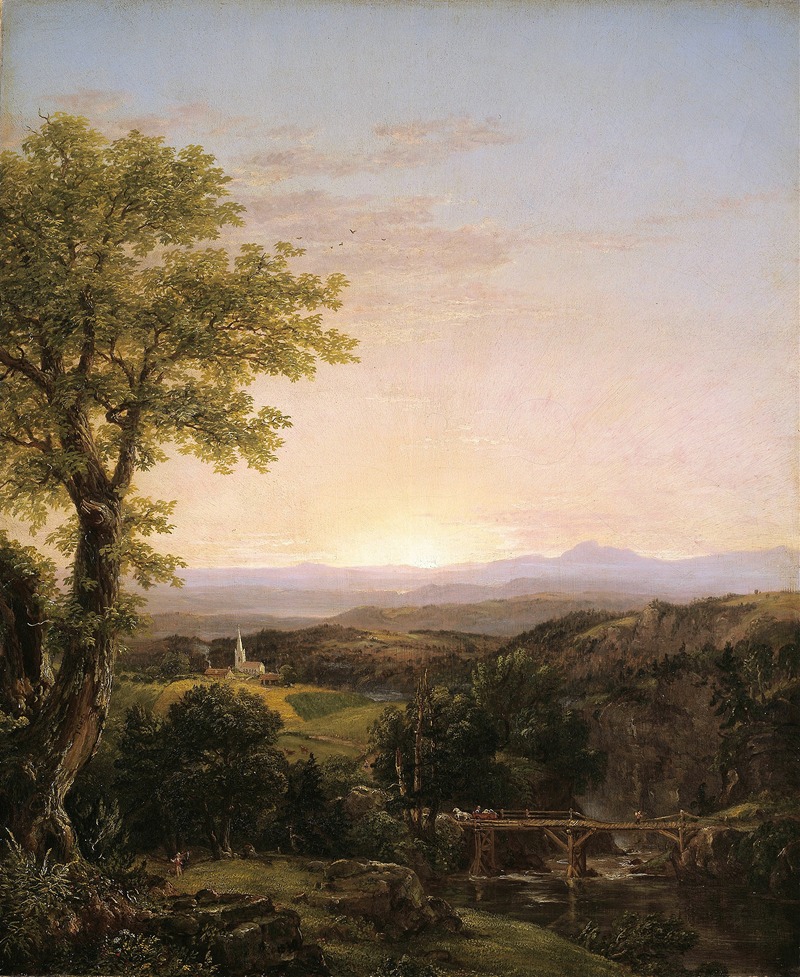
New England Scenery
A hand-painted replica of Thomas Cole’s masterpiece New England Scenery, meticulously crafted by professional artists to capture the true essence of the original. Each piece is created with museum-quality canvas and rare mineral pigments, carefully painted by experienced artists with delicate brushstrokes and rich, layered colors to perfectly recreate the texture of the original artwork. Unlike machine-printed reproductions, this hand-painted version brings the painting to life, infused with the artist’s emotions and skill in every stroke. Whether for personal collection or home decoration, it instantly elevates the artistic atmosphere of any space.
"New England Scenery" is a painting by Thomas Cole, an influential American artist known for his role in founding the Hudson River School, an art movement that celebrated the natural beauty of the American landscape. Painted in 1839, "New England Scenery" exemplifies Cole's dedication to capturing the sublime and picturesque qualities of the American wilderness, while also reflecting his philosophical and moral concerns.
Thomas Cole was born in 1801 in Lancashire, England, and emigrated to the United States with his family in 1818. He eventually settled in New York, where he became captivated by the American landscape. Cole's work often juxtaposes the untouched beauty of nature with the encroachment of civilization, a theme that is evident in "New England Scenery."
The painting itself is a large-scale work that measures approximately 51 x 76 inches. It depicts a panoramic view of a New England landscape, characterized by its lush greenery, rolling hills, and tranquil water bodies. In the foreground, a group of figures can be seen engaging in various activities, such as fishing and picnicking, which adds a narrative element to the scene. The middle ground features a river that winds through the landscape, leading the viewer's eye towards the distant mountains and the expansive sky above.
Cole's meticulous attention to detail is evident in the rendering of the natural elements, from the texture of the trees to the play of light and shadow across the terrain. The composition is carefully balanced, with the natural elements harmoniously integrated into the scene. The use of light is particularly noteworthy, as it imbues the painting with a sense of tranquility and timelessness.
"New England Scenery" is more than just a depiction of a specific location; it is a reflection of Cole's broader artistic and philosophical concerns. The painting embodies the Romantic ideals of the sublime and the beautiful, capturing the awe-inspiring power of nature while also conveying a sense of peace and harmony. Cole was deeply influenced by the writings of European Romantic poets and philosophers, and his work often explores themes of nature, spirituality, and the passage of time.
In addition to its aesthetic qualities, "New England Scenery" can also be seen as a commentary on the rapid industrialization and expansion occurring in America during the 19th century. Cole was known for his ambivalence towards progress and often expressed concern about the impact of human activity on the natural world. Through his art, he sought to remind viewers of the intrinsic value and beauty of the natural environment.
Today, "New England Scenery" is held in the collection of the National Gallery of Art in Washington, D.C. It remains an important example of Thomas Cole's work and a testament to his enduring influence on American landscape painting. The painting continues to be celebrated for its artistic merit and its ability to evoke contemplation about the relationship between humanity and the natural world.





